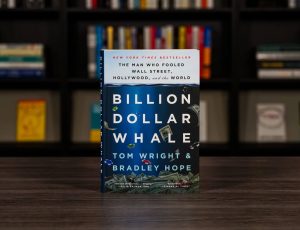DGCA: Now Approves Business Models too?
I like Tony Fernandes. He is the CEO of Air Asia with a spunky attitude which has made him one of the richest people in Malaysia. Here is an individual that turned around an unsuccessful airline and has made it the best low cost airline in the world two years in a row in just over 13 years! Then he challenged his fellow rival in the airline and F1 racing league, Sir Richard Branson, to a duel which he won and got Branson to… well this picture is worth a 1,000,000 words
Yes that is Richard Branson (right) in an AirAsia cabin crew uniform serving Tony Fernandes (left)
He is also the owner of a the English football team, West Ham United, runs a group of budget hotels under the brand name, Tune Hotels and when he has time off from doing all this, he plays the Donald Trump equivalent in the Asian version of The Apprentice.
About a year back, AirAsia teamed up with Tata to create a budget airline for the Indian skies under the name AirAsia India. Their pricing and business model that has made them so successful in South East Asia and which would be, in my opinion, a boon for travellers in India, was going to be implemented at the launch of their airline.
Alas, Tony didn’t know that the same authority that decided to grant him a license to fly AirAsia planes in the Indian skies was also responsible for fixing the prices that an airline could charge on a flight! Last year DGCA allowed airlines to provide ala carte pricing to customers allowing them to opt-in and out of services that they would like to have during their travel. (A copy of that order is available here). At that time the move was welcomed by all industry players, the rules of the game were simple and the industry could finally start clawing back from the precarious financial position that they faced with a running net loss of over Rs. 10,000 crores for the last fiscal (as an industry).
So when Tony decided to charge customers for check-in baggage – as allowed in the DGCA order and as charged to the 5.1 crore passengers carried on AirAsia flights in 2013, his executive team would have expected to jolt his competition but none of their probability analyses would include intervention from Big Brother, DGCA themselves! As per the order given on the government website there is no requirement for AirAsia to get DGCA’s approval to charge a particular fee to their customer as long as it doesn’t violate the checklist given in the order. From what I can understand, AirAsia India was within its right to charge its customer whatever fee it wanted as long as it was transparent and it didn’t interfere with the base pricing of the ticket – AirAsia India didn’t do any of those – so why did the DGCA intervene?
To prove a point (what it is, will be a mystery) DGCA forced AirAsia to offer 15 kgs of free check-in baggage to customers and made it reduce pricing for other things too. Such myopic moves from the regulator would be one of the primary reasons why AirAsia’s plans to breakeven by October 2014 have now been pushed off to December 2014 (they don’t mention it most probably to avoid the wrath of the regulator).
Tony Fernandes expressed his anguish to the Times of India calling his entry into the India Airline industry his “worst reception” and when such a statement comes from the 2010 Forbes Asia Businessman of the Year – it is time for us to be disgusted and appalled at the over-reach from the DGCA.
On what authority (and research) did DGCA intervene in a company’s pricing strategy? Will they be responsible for repaying the losses created by the consequences of their actions or is it the responsibility of businessmen to cater to their whims and fancies instead of their customers?
The DGCA would be better off monitoring the state of operations of an airline that has seen its cash balance fall to less than the revenue it earns for a day and infact has borrowed from travel agents to keep its engines whirring. They should get their babus cracking down on the predatory pricing charged to the customers wherein a full service airline like Air India and a no-frills competitor like Indigo have the same fare between two cities. Instead they are stressing out the new player that is doing what the DGCA should have been doing – breaking up this cartel.
Was the DGCA sleeping when Kingfisher was racking up fantastic losses and not paying its staff or the airports or taxes or for fuel? It took them an age to decide on the course of action for the now defunct airline? What is it doing to recover that money or will us tax payers be subsidizing those losses too?
Please DGCA it is time that you focus on what you can do right. You and other regulators and government authorities are better off governing not “ruling” the entrepreneurial class.
(This is my first post on a series of posts about the undue stress placed on entrepreneurs by an overzealous regulator and they not only make business difficult, in some cases they destroy ambitions altogether. Look forward to your comments and suggestions on this post and for what I should cover in future posts)






Pingback: LinkedIn’s Inmail Credit – An Example for Other Businesses to Follow | showmedamani